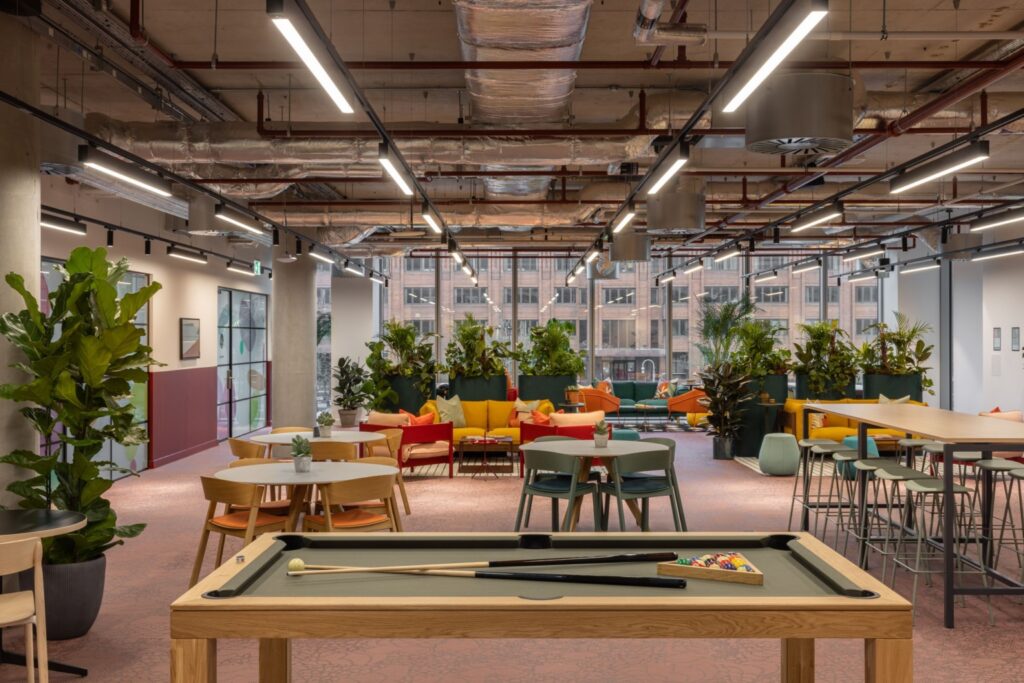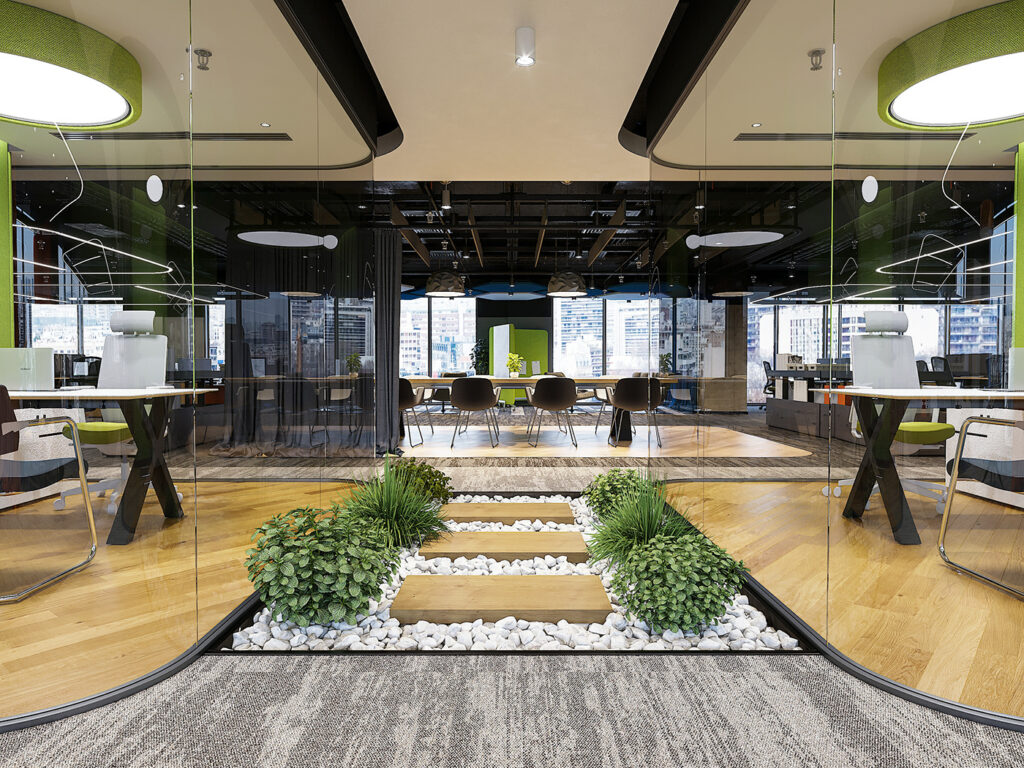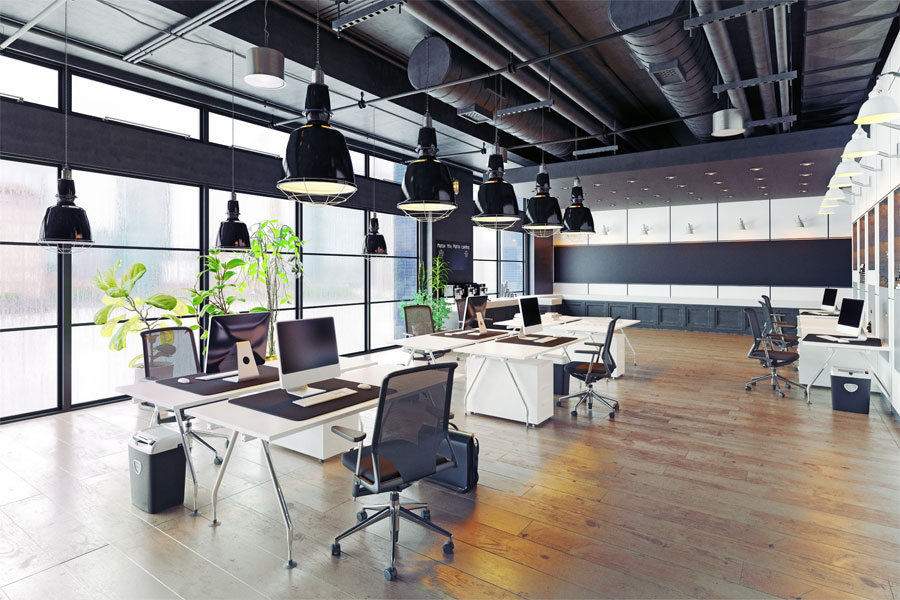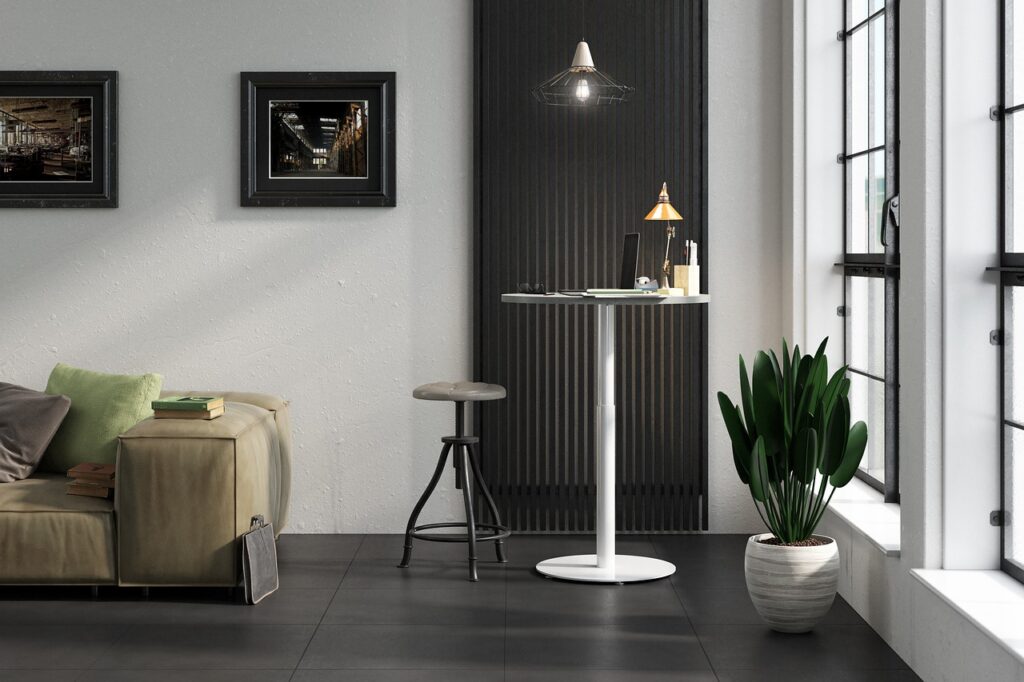Introduction
Workplaces in 2025 don’t look—or feel—like they did a few years ago. The conversation has evolved from “How do we make employees work better?” to “How do we help employees feel better?” And this shift is reshaping commercial interiors across the world. Companies have finally realized that when people feel healthy, supported, and comfortable, everything else—productivity, creativity, retention—naturally follows.
Today, wellness in workplace design is no longer a trend. It’s a responsibility, a performance strategy, and in many ways, a competitive advantage.
Why Wellness Matters More Than Ever
The connection between physical environment and human behaviour is undeniable. Employees who work in healthy, carefully designed spaces simply perform better. They experience fewer sick days, stay focused longer, and engage more deeply with their work.
Just think about it—when your mind feels calm, the lighting feels natural, the chair supports your posture, the air feels fresh, and the space allows you to breathe… your work automatically becomes smoother and more enjoyable. That’s the power of wellness-led interiors.
Beyond health, there’s also the human emotional factor. Modern employees are dealing with digital fatigue, long hours, and constant pressure. A workspace that supports mental well-being—through calming colours, natural elements, or thoughtfully designed quiet areas—becomes a safe space that helps reduce burnout and anxiety.
And then there’s the business side. Companies that prioritize wellness naturally attract better talent and retain them longer. It signals care, culture, and forward-thinking leadership. Add to that the global focus on ESG commitments, and workplace wellness becomes part of a larger promise that a company makes to its people and to the planet.
What Wellness-Centric Design Really Looks Like
Wellness-focused interiors don’t rely on one magic element—they are a holistic ecosystem.
Natural light becomes a design priority, not an afterthought. Workstations become flexible instead of fixed. The office starts blending greenery with smart technology. Comfort becomes as important as aesthetics.
Biophilic design is one of the strongest contributors here because humans instinctively respond positively to nature. When you walk into a space filled with plants, natural textures, and warm, organic materials, your stress levels automatically reduce. Similarly, adaptive lighting systems that adjust throughout the day help stabilize circadian rhythms. Better lighting equals better energy, better mood, and better focus.
Ergonomics becomes non-negotiable. Adjustable desks, supportive seating, and movement-friendly arrangements allow employees to avoid the long-term strain that traditional setups often create. When design encourages mobility instead of restricting it, health improves dramatically.
Air quality, often ignored in older workplaces, is now central to wellness. Companies are investing in smart HVAC systems, air purifiers, and sensors that ensure employees are breathing healthier, cleaner air. Good ventilation alone can significantly reduce fatigue and midday burnout.
Even noise is treated differently today. Acoustic wellness—through quiet rooms, sound-absorbing materials, and smart zoning—creates an environment where people can focus or collaborate without stress.
And then there are those “breathing spaces”: meditation corners, nap pods, fitness-focused breakout zones. These aren’t luxuries—they’re scientifically rooted spaces that help the brain reset, helping employees return to work refreshed and energized.
A Real Example of Wellness Impact
Recently, a Mumbai-based IT company redesigned its office around wellness principles—bringing in natural light corridors, ergonomic work setups, and lush biophilic walls.
The outcome? Within six months:
- Absenteeism dropped by 18%
- Employee satisfaction scores increased by 25%
This is a reminder that workplace design isn’t just about looks—it directly impacts how people feel and perform.
The Wellness Movement in 2025
The new workplace culture is shaped by a deeper understanding of human needs.
From mindfulness zones to micro gyms, from circadian lighting to healthy cafeterias, companies are investing in environments that help employees stay physically energized and mentally balanced.
What’s exciting is that wellness has become measurable. Smart sensors track air quality and noise levels. Lighting systems sync with human biological rhythms. Interiors are starting to adapt to people, not the other way around.
How Businesses Can Start the Journey
Beginning with wellness doesn’t require a complete office overhaul. A simple audit of your current space—how much natural light you have, the quality of air, the comfort of seating, or the noise levels—can reveal a lot.
And the smartest companies involve employees in this journey; after all, they understand their daily challenges better than anyone.
Wellness isn’t just an expense. It’s an investment that pays off through healthier employees, fewer healthcare concerns, higher productivity, and a stronger organizational culture.
Conclusion
In 2025, wellness-focused commercial interiors aren’t a luxury—they’re a foundation for future-ready businesses. A workspace that prioritizes health and well-being becomes a driver of performance, creativity, and long-term success.
At AirBrick Infra, we design commercial workspaces that blend aesthetics, functionality, and wellness to create environments where employees genuinely feel their best—every single day.
Frequently Asked Questions
Ques 1: What are wellness-focused commercial interiors?
Ans: Wellness-focused commercial interiors are workspaces designed to improve employee health, comfort, and productivity through elements like natural lighting, biophilic design, ergonomic furniture, better air quality, and mindful breakout spaces.
Ques 2: How does workplace wellness design improve productivity?
Ans: A wellness-led environment reduces stress, minimizes fatigue, enhances focus, and supports better mental health—all of which directly boost employee performance and reduce absenteeism.
Ques 3: What are the key elements of a wellness-centric office in 2025?
Ans: Modern wellness offices include adaptive lighting, ergonomic setups, indoor greenery, smart air systems, acoustic comfort, and dedicated relaxation or mindfulness zones that help employees recharge throughout the day.
Ques 4: Is investing in wellness-focused interiors expensive?
Ans: It doesn’t have to be. Even small changes—like improving lighting, adding plants, upgrading chairs, or enhancing ventilation—can significantly elevate employee well-being without a full redesign. The long-term ROI often outweighs the initial cost.
Ques 5: How can businesses start implementing wellness-driven design?
Ans: Begin with a wellness audit: check lighting, air quality, ergonomics, and noise levels. Engage employees for insights, then upgrade essentials like seating, lighting, and breakout areas to create a healthier, supportive workspace.
Summary
Workplaces in 2025 are transforming from purely functional setups into environments built around employee well-being. Wellness-focused commercial interiors emphasize natural light, biophilic elements, ergonomic furniture, and cleaner air—creating spaces where people feel energized, comfortable, and supported. These workspaces go beyond aesthetics; they’re intentionally designed to improve mental health, focus, and long-term productivity.
Companies adopting wellness-led design are already seeing clear benefits: reduced absenteeism, higher satisfaction scores, and improved performance. Even simple changes like adding greenery, upgrading seating, or improving ventilation can significantly influence how employees think and feel.
This approach also aligns with global ESG objectives, making workplaces healthier and more responsible. In an era of digital fatigue and rising stress levels, wellness-driven design has shifted from a “good-to-have” to a strategic necessity. A workspace that supports physical and mental well-being naturally builds stronger culture, better retention, and a more motivated team.
AirBrick Infra turns this vision into reality by creating commercial spaces that blend wellness, functionality, and modern design—helping employees truly thrive at work.





